Ministries Tags: presbyterians today
Bible Explorations
The Rule of the Last
Have we been interpreting Scripture wrongly all this time?
by Aric Clark
Even when I am sitting alone in a cozy nook with a blanket and a cup of tea, reading is an inherently social act. Not only am I interacting with the thoughts of the author, but also a complex social web informs my reading. That book found its way into my possession through social interactions. Whether literature or nonfiction, it almost certainly belongs to a genre informed by a series of social conventions. Most importantly, my interpretation of the content will be heavily shaped by my experiences and social location. I am a straight, cisgendered, educated, white male. I bring all of that with me to the text.
If this is true of all reading, it is even truer of Scripture, which is frequently read in the communal settings of worship and study, thick with socially constructed rules of interpretation. We never read the Bible alone, and the people we read the Bible with are the most significant influence over how we understand and apply it in our lives.
Continue reading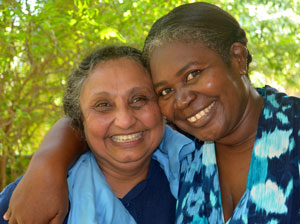 A Mission Co-worker’s Journey
A Mission Co-worker’s Journey
Growing Food and Friendships in Haiti
Mission trip and new roundtable conversations lead to transformation.
By Cindy Corell
Our group of six Americans and a couple of Haitians trooped carefully across the field where we admired Roma tomato plants, laden with their ripe, red fruit.
Greeting us in the garden was Rosana Thelusma, smiling as if she’d waited for our visit for a long time.
Fabienne Jean—coordinator of the Presbyterian Hunger Program’s Joining Hands network in Haiti—and I, the network’s companionship facilitator, had brought the delegation from the Presbytery of the James in Virginia to visit partners in the area.
Jean’s job is to run the operations of our network.
My job is to be a liaison with our partners in the United States and to facilitate friendships.
On this February trip, I saw all our work in action!
Continue reading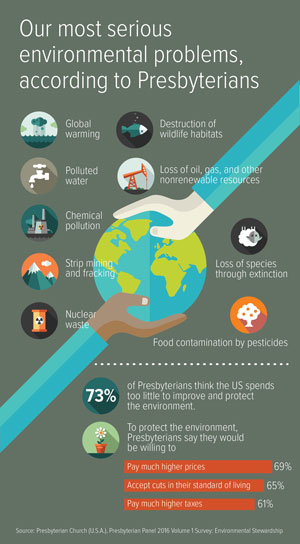 Go Figure
Go Figure
Presbyterians and the Environment
by Angie Andriot
God has given humans a responsibility to care for the earth. About 98 percent of Presbyterians agree with this statement, according to a recent study by PC(USA) Research Services. In addition, 90 percent feel that environmental issues are appropriate social concerns for the church.
But are we as a denomination doing enough? The resounding answer is no: 71 percent of Presbyterians believe that the Presbyterian Church (U.S.A.) should become more involved in environmental issues. Climate change tops the list, with 73 percent of Presbyterians agreeing this is one of the most serious environmental issues we face today.
Continue reading A Providential Coincidence
A Providential Coincidence
Belhar and C67: calls to reconciliation ‘for such a time as this’
By Clifton Kirkpatrick
When the 179th General Assembly (1967) convened almost 50 years ago in Portland, Oregon, society was experiencing a time of tumult and massive social change. The Civil Rights Act and the Voting Rights Act had recently been enacted, with churches—especially black churches—leading the call for racial and social justice. Clearly the Presbyterian Church was called upon to act—and it did in a variety of ways, including giving clear expression to our mandate to work for racial justice in the Confession of 1967.
One of the reasons given for holding our next General Assembly in Portland is the importance of celebrating the 50th anniversary of the adoption of the Confession of 1967 in the city where it was adopted. In the prelude to that General Assembly, an overwhelming number of presbyteries endorsed the confession. Although the confession is almost 50 years old, it continues to capture the imagination of the church. Princeton Theological Seminary and Stony Point Center held commemorations to mark the 15- and 35-year anniversaries, respectively, reminding the church of the confession’s continuing relevance. That will again be a major focus as the Assembly gathers in Portland in 2016.
Continue reading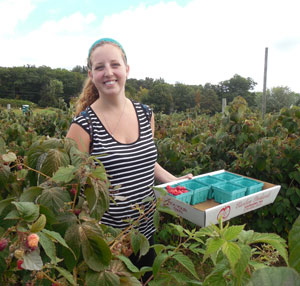 Food Justice: A Growing Concern
Food Justice: A Growing Concern
Presbyterians help people in marginalized contexts gain access to affordable, healthy food.
By Tammy Warren
Mary Medina, a PC(USA) Young Adult Volunteer, thought she knew what a food desert was until she participated in a short-term mission trip to New Orleans after Hurricane Katrina. “Then I understood the toll it takes on a community,” she says. “New Orleans is a port city, and there isn’t a lot of opportunity to farm or grow a garden. However, in a place riddled with heart disease, diabetes, and strokes, it’s important to stress how important fresh fruits and veggies are to the health and nutrition of the population,” she says.
In the United States today, 50 million people—one in six—live in a condition of sustained hunger or food insecurity, according to the 2016 Hunger Report, published by the nonprofit Bread for the World Institute, a Christian advocacy group supported by the Presbyterian Hunger Program.
Continue readingPreview of the MAY/JUNE 2016 Issue
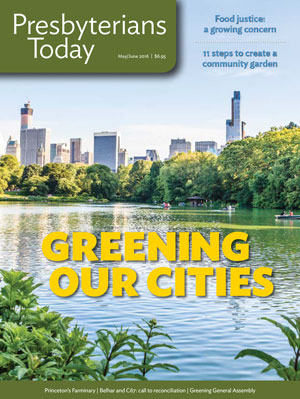 Greening Our Cities
Greening Our Cities
A growing movement to reconcile natural and human communities may reflect a biblical vision for God’s creation.
by Rebecca Barnes
When I was a little girl, the tree in my backyard was the stage for my imagination. I spent hours by that tree, in a parcel of green, in the middle of a medium-sized city. I often didn’t wear shoes—perhaps fitting too nicely the stereotype of a young Kentuckian. I liked the feel of grass under my feet and the gnarled wood against my soles as I stood on my personal platform (a prominent root that surfaced a few feet from the tree). My dad had blackberries, corn, and tomatoes growing against the back fence. All of this somehow created a world where I could block out the noisy traffic of a major street—a stone’s throw from my back fence—and the constant rumble and whistle of trains.
I’ve stayed in the city but connected to the earth, finding places to encounter God, by finding trees and green wherever I can. These safe, peaceful places have given me blessed, private moments to collect my thoughts, utter prayers, and come back to my “center.”
Continue reading Go Figure
Go Figure
Triennium changes lives
by Joelle Kopacz
Common sense would tell us that Presbyterian Youth Triennium is a good thing. How could it be anything but good to gather thousands of Presbyterian youth and leaders from across the country to worship and grow in their faith? Yet you might still be surprised to see just how good Triennium is!
Those who attended the most recent Triennium (2013) have overwhelmingly been positively affected by the event, which has often prompted them to grow in their faith and to share this faith with others. Presbyterian youth report developing leadership skills to exercise in their peer groups and congregations.
Yet youth aren’t the only ones benefitting from Triennium. Among congregational leaders who attended the 2013 Triennium, many have been equipped with new energy and knowledge to help their congregations grow. Some have even developed new ministries as a result of Triennium. These leaders feel especially equipped to help their congregations strengthen their youth ministry, worship, and overall vision.
When asked what about the experience was so formative, 51 percent named relationships and a feeling of connectedness at Triennium. Another 31 percent identified worship as the most important factor.
The next Triennium is coming up in just a few short months. If you are a leader in your congregation, consider joining your church’s youth at this event. Worship with them, grow with them, and dream with them about the future of your congregation—and of the denomination.
Continue reading What Presbyterians Believe
What Presbyterians Believe
Why do we keep Sabbath?
The Bible’s rhythm of creation and rest couldn’t be more important for today’s busy Christians.
by Kris Haig
Continue reading Go!
Go!
Presbyterian Youth Triennium—where worship is as big as the faith of 7,000 teenagers from around the world
By Marci Glass
I’ll never forget my first experience of worship at Presbyterian Youth Triennium. I can see it in my mind to this day: the doors open to Elliott Hall of Music at Purdue University, and 4,500 youth rush into the auditorium, hoping to get seats up front. To an outside observer, it looks as if a rock star is about to give a concert. But these kids are here to worship. They sing loudly and from the heart. They interact with the preaching. They connect sacred texts with the sacred moments of their everyday lives. It is worship both uncommon and familiar. With loud music and dimmed lights. With familiar liturgy and hymns.
People often fret about the future of the church. And yes, some churches are closing, and budgets are getting smaller. But each time I worship with youth at Triennium, any anxiety about the future of the church subsides. Our youth want to be challenged. They want to be engaged. They want to come before God in praise and lament. And at Triennium, at least, they have the opportunity to do just that.
The first Presbyterian Youth Triennium was held at Indiana University in Bloomington in 1980 with about 2,500 youth and adults in attendance. The Cumberland Presbyterians, Presbyterian Church in Canada, and the precursor denominations to the PC(USA) started the event. Three years later, the event moved to nearby Purdue, where it has met every three years ever since.
Anywhere from 3,500 to 7,000 youth and adult leaders regularly attend Triennium, and if you have never worshipped with 7,000 youth, you might not be able to imagine the level of energy and joy gathered in one place.
Continue reading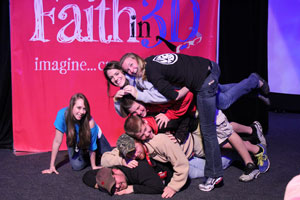 Unleashed
Unleashed
The top 10 things to look for in an effective, faithful youth ministry
By Gina Yeager-Buckley
I am stuck. I am “on” for teaching Sunday school this Sunday. It’s the day after two more episodes of violence—the shootings in San Bernardino, California, and Savannah, Georgia. It’s also Advent, and our two students, Annie and Abby, both delightful and compassionate young women, will not likely relish talking about more violence.
I feel ill at the idea of exposing them to any more of this mess. And there’s only the two of them. Yes, two. I am one of several youth-ministry volunteers at a small and wonderful church. Our youth class has two students and three teachers. We rotate so as not to overwhelm Abby and Annie with our sometimes-too-exuberant affection for them.
That love makes this moment all the more difficult. I feel lost and anxious about how to do an Advent lesson without being upfront about so much evil in the world.
Looks like I am not alone in my worry about Sunday’s lesson, either. When I log onto my work email (I am the Presbyterian Mission Agency’s associate for youth ministries), I find 10 messages from people across the nation asking me about curriculum for talking with youth about violence.
Continue reading